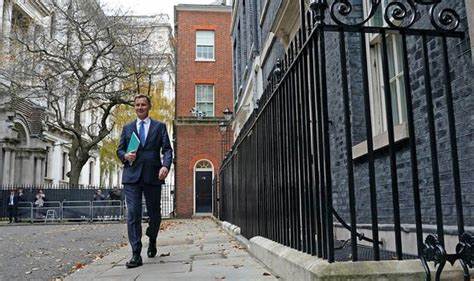
23 Nov Autumn Statement 2023
Below is a summary of the key parts of the Autumn Statement. There was plenty of tax cuts announced by Mr Hunt, 110 in total, however a continual freeze on tax thresholds, such as your tax free personal allowance, will limit how much better off people actually feel. With a general election looming expect further tax cuts in the Spring Budget.
National Insurance was at the front and centre of the Chancellor’s Autumn Statement measures, with a focus on the main rate for employees, as well as Class 2 and Class 4 NICs for the self-employed. Meanwhile there was plenty more for small business owners to digest, including updates to the National Living Wage, business rates and a simplified research and development scheme.
Self-employed National Insurance cuts
The Chancellor delivered a boost for the self-employed, by announcing several tax saving measures in relation to the amount of National Insurance Contributions (NIC) sole traders are required to pay.
The main rate of Class 4 NIC that sole traders are liable to pay will be reduced by 1% from 9% to 8%, from 6th April 2024. From the same date, sole traders with profits above £12,570 will no longer be required to pay Class 2 NIC. They will, however, continue to receive access to contributory benefits, such as the state pension. Where sole trade profits are between £6,725 and £12,570, entitlement to contributary benefits will be maintained. Those sole traders with profits under £6,725 will be able to pay voluntarily Class 2 to get access to contributory benefits, as is currently the case.
Employee National Insurance cut
Employees can also look forward to a tax cut with the announcement that the main rate of Class 1 National Insurance Contributions, paid by employees, will fall by 2% from 12% to 10% from 6th January 2024.
The employer rate of Class 1 NIC will remain the same and employers will need to ensure their payroll software is updated for this change. Technical specifications for payroll software companies are expected in due course.
State pension increase
The Government plans to maintain the triple lock to support pension incomes and will increase the state pension by 8.5% in April 2024, taking the full state pension up from £203.85 per week in 2023/24 to £221.20 per week in 2024/25.
National Minimum & Living Wage Increases
From 1st April 2024, the Government will increase the National Living Wage (NLW) by 9.8% from £10.42 to £11.44 an hour. This represents an increase of over £1,800 to the annual earnings and is expected to benefit over 2.7 million workers. The National Living Wage had previously been payable to those aged 23 and over and will now apply for eligible UK workers across the UK aged 21 and over.
Rates for 18–20-year-olds and 16-17-year-olds and apprentices will also see a boost to their wages through increases to the National Minimum Wage (NMW) to £8.60 and £6.40 respectively.
Business rates relief
The Government is supporting small businesses by freezing the small business rates multiplier in England at 49.9p for 2024/25, for a fourth consecutive year, protecting small businesses at risk of inflation.
The business rates standard multiplier for other businesses will increase in line with inflation.
The Retail, Hospitality and Leisure (RHL) relief will also be extended for 2024/25. The relief was introduced in 2023/24 and was due to cease in April 2024. This relief reduces qualifying business’ annual business rates liability by 75%, with a cap of £110,000 per business.
Making Tax Digital for Income Tax & tax simplification
The Government announced intended design changes to the Making Tax Digital (MTD) system, which they advise are to simplify and improve MTD for taxpayers and accountants.
The Government also announced an expansion and simplification of the income tax cash basis for the self-employed and partnerships. These changes will take effect from 6th April 2024, for 2024-25.
While the Government’s proposals on the cash basis go wider than businesses affected by Making Tax Digital, there are important interactions between changes to the cash basis and MTD. We will provide additional commentary on these announcements in due course.
Research and development (R&D)
The recent consultation on R & D will be closed following announcements in the Autumn Statement 2023. HMRC will continue to monitor compliance and will provide enhanced support to claimants.
Merger of the two existing schemes – In a simplification which will align the two R&D systems, existing Research and Development Expenditure Credit (RDEC) and Small and Medium Enterprise (SME) schemes will be merged so any expenditure incurred in accounting periods beginning on or after 1st April 2024 will be claimed in the new merged scheme. The notional tax rate applied to loss-makers in the merged scheme will reduce from 25%, as per the current RDEC scheme, to 19%.
Additional tax-relief for R&D intensive loss-making SMEs – Under the SME scheme, rules previously announced saw a restriction of the repayable cash payment rate from the previous 14.5% to 10%. However, loss making R&D intensive SMEs were still able to claim the higher rate where at least 40% of their total expenditure was on R&D. This percentage is now relaxed from 40% to 30%, which means around 5,000 more R&D intensive SMEs will be able to claim. This will include a one-year grace period, so companies that fall beneath the 30% threshold will continue to receive relief for one year. Companies will be able to claim for expenditure arising from 1st April 2023 once the Autumn Finance Bill 2023 has received Royal Assent, with the reduction in intensity threshold and grace period coming into effect for accounting periods beginning on or after 1st April 2024.
Capital expenditure for companies
The previously announced reform by which companies can obtain tax relief on capital expenditure incurred from 1st April 2023 until 31st March 2026, has now been made permanent.
A company can continue to make use of the £1m Annual Investment Allowance (AIA), alongside two previously announced first year allowances for qualifying plant and machinery expenditure.
Companies can currently obtain 100% “full expensing” relief on capital expenditure which falls within the main rate of capital allowances. Companies can also claim 50% tax relief on expenditure which would fall within the special rate pool for capital allowance purposes. As before, relief will only be obtained if the equipment is new rather than second hand. Some exclusions apply to what expenditure will qualify for full expensing, most notably on cars and plant and machinery for leasing.
Making full expensing permanent will impact those companies incurring expenditure exceeding the standard £1m AIA during an accounting period. Larger companies are likely to benefit the most from this extension of relief.
Also announced in the Autumn Statement
- The Government is extending the National Insurance Contribution relief for employers of eligible veterans for a further year from April 2024 until April 2025. Employers will continue to pay no employer NICs on annual earnings up to £50,270 for the first year of a qualifying veteran’s employment in a civilian role.
- The Government is freezing the rates of alcohol duty until 1st August 2024.
If you have any queries, please get in touch.

